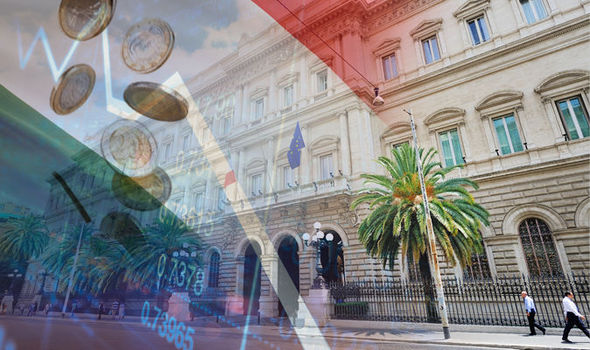Euro disaster: Basket-case Italy faces decade of austerity just to get back to 2007 levels

ITALY'S economy is around halfway through a lost two decades, following a slow and painful recovery from the financial crisis that still has a long way to go, according to alarming analysis by the International Monetary Fund (IMF).
Amid a surge in refugees, market turmoil and a slowdown in global trade, the Mediterranean country will not to return to 2007 output levels before the mid-2020s, the fund has forecast.
And the path back to pre-crisis levels is still subject to many risks, warned the IMF.
Italy's banks and their "strained" balance sheets, which are swapped by very high levels of bad loans, were highlighted as a major area of vulnerability for the economy by the washington-based organisation.
Productivity and investment growth are low, while the unemployment rate is still above 11 per cent — and even higher in some parts of the country and among younger people, added the IMF in its debrief.
At the same time public debt has is now close to 133 percent of GDP, which limits policymakers ability to respond to any shocks, said the fund.
Growth is now predicted to remain at under one per cent this year, and expected to fare little better next year.
Italy is slowly recovering from its long recession amid low commodity prices and favourable monetary policy, such as low interest rates and cheap money, said the IMF.
But the IMF added it's "imperative" that authorities continue to make "very important" institutional, administration, fiscal, labour market and banking reforms.
The shock report, which plunge the Eurozone into further crisis, comes amid growing fears over Italy's banks among investors and politicians, which has prompted the government to draw up another emergency bailout plan — despite this being against European Union rules.
Italian lenders are struggling with around €360billion (£300bn) of bad loans, which amounts about one third of the euro zone total.
Rome is trying to rescue banks without hitting small savers.
Политика конфиденциальности | Правила пользования сайтом







